Petrified Forest National Park
Petrified Forest National Park is an American national park in Navajo and Apache counties in northeastern Arizona. Named for its large deposits of petrified wood, the park covers about 346 square miles (900 square kilometers), encompassing semi-desert shrub steppe as well as highly eroded and colorful badlands. The park's headquarters is about 26 miles (42 km) east of Holbrook along Interstate 40 (I-40), which parallels the BNSF Railway's Southern Transcon, the Puerco River, and historic U.S. Route 66, all crossing the park roughly east–west. The site, the northern part of which extends into the Painted Desert, was declared a national monument in 1906 and a national park in 1962. The park received 644,922 recreational visitors in 2018.
Averaging about 5,400 feet (1,600 m) in elevation, the park has a dry windy climate with temperatures that vary from summer highs of about 100 °F (38 °C) to winter lows well below freezing. More than 400 species of plants, dominated by grasses such as bunchgrass, blue grama, and sacaton, are found in the park. Fauna include larger animals such as pronghorns, coyotes, and bobcats, many smaller animals, such as deer mice, snakes, lizards, seven kinds of amphibians, and more than 200 species of birds, some of which are permanent residents and many of which are migratory. About one third of the park is designated wilderness—50,260 acres (79 sq mi; 203 km2).The Petrified Forest is known for its fossils, especially fallen trees that lived in the Late Triassic Epoch, about 225 million years ago. The sediments containing the fossil logs are part of the widespread and colorful Chinle Formation, from which the Painted Desert gets its name. Beginning about 60 million years ago, the Colorado Plateau, of which the park is part, was pushed upward by tectonic forces and exposed to increased erosion. All of the park's rock layers above the Chinle, except geologically recent ones found in parts of the park, have been removed by wind and water. In addition to petrified logs, fossils found in the park have included Late Triassic ferns, cycads, ginkgoes, and many other plants as well as fauna including giant reptiles called phytosaurs, large amphibians, and early dinosaurs. Paleontologists have been unearthing and studying the park's fossils since the early 20th century.
The park's earliest human inhabitants arrived at least 8,000 years ago. By about 2,000 years ago, they were growing corn in the area and shortly thereafter building pit houses in what would become the park. Later inhabitants built above-ground dwellings called pueblos. Although a changing climate caused the last of the park's pueblos to be abandoned by about 1400 CE, more than 600 archeological sites, including petroglyphs, have been discovered in the park. In the 16th century, Spanish explorers visited the area, and by the mid-19th century a U.S. team had surveyed an east–west route through the area where the park is now located and noted the petrified wood. Later, roads and a railway followed similar routes and gave rise to tourism and, before the park was protected, to large-scale removal of fossils. Theft of petrified wood remains a problem in the 21st century.
- 1 Geography
-
2
Geology
- 2.1 Fossils
- 3 Climate
- 4 History
- 5 Biology
- 6 Activities
- 7 In popular culture
- 8 See also
- 9 References
- 10 Works cited
- 11 External links
Links
Images Gallery
-

-

-

-

-

-
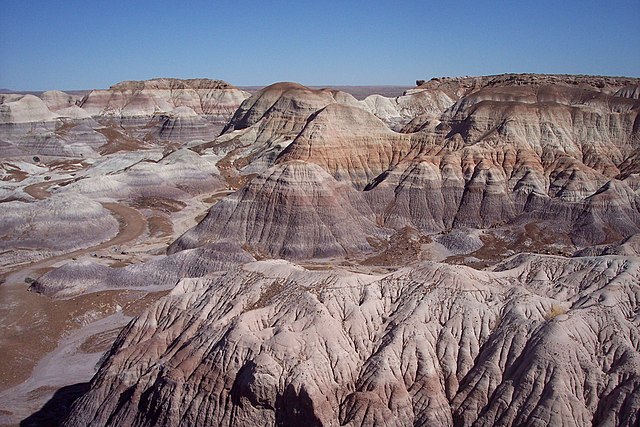 Painted desert and petrified logs seen from Blue Mesa
Painted desert and petrified logs seen from Blue Mesa
-

-

-

-
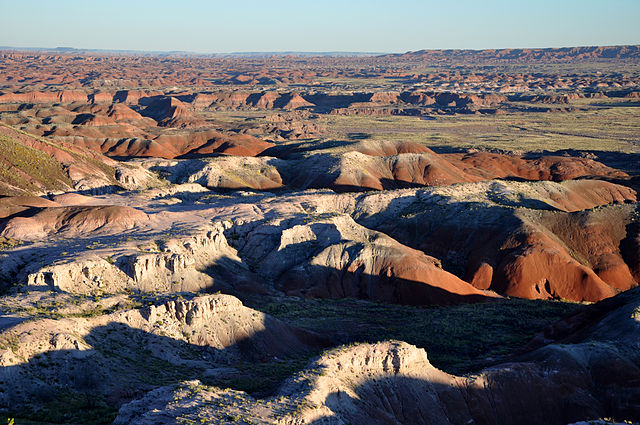 Painted Desert badlands as seen from the rim at Tawa Point
Painted Desert badlands as seen from the rim at Tawa Point
-
 A petrified log in the Petrified Forest
A petrified log in the Petrified Forest
-
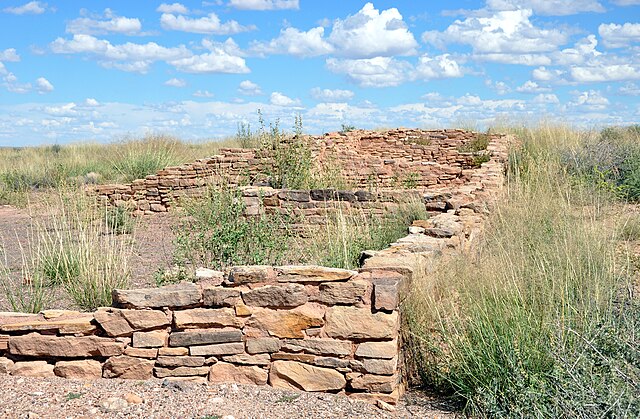
-
 Petroglyphs pecked into desert varnish in Petrified Forest National Park
Petroglyphs pecked into desert varnish in Petrified Forest National Park
-
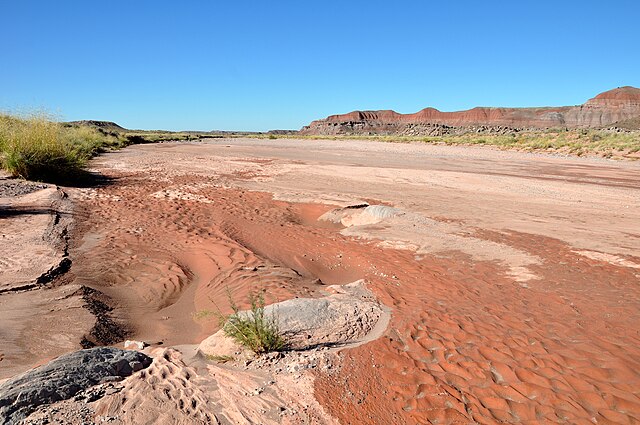 Lithodendron Wash in the designated wilderness in the north part of the park. Amiel Whipple surveyed along the wash in 1853.
Lithodendron Wash in the designated wilderness in the north part of the park. Amiel Whipple surveyed along the wash in 1853.
-
 Exhibit commemorating U.S. Route 66, a historic transcontinental highway that passed through the park
Exhibit commemorating U.S. Route 66, a historic transcontinental highway that passed through the park
-
 At Tiponi Point, lush vegetation on the Painted Desert rim overlooks the relatively barren badlands below.
At Tiponi Point, lush vegetation on the Painted Desert rim overlooks the relatively barren badlands below.
-

-
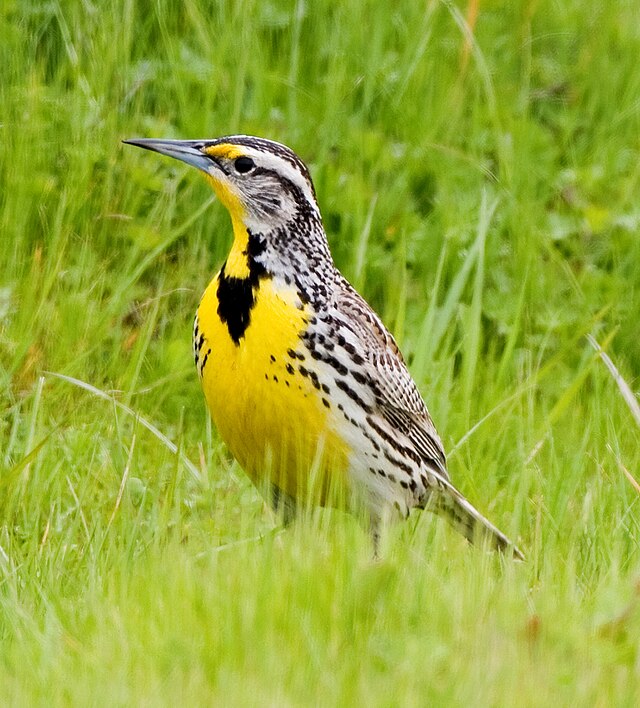 Western meadowlarks, prized for their song, frequent the park.
Western meadowlarks, prized for their song, frequent the park.
-
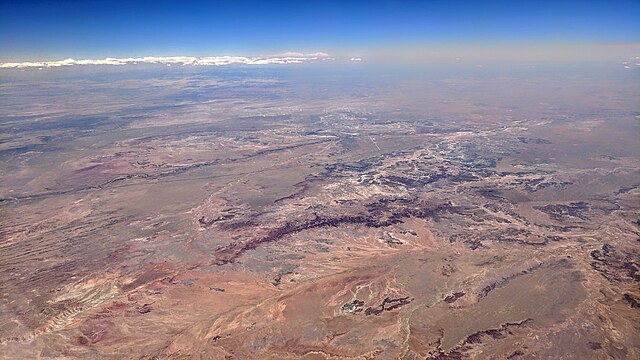 Aerial view looking south from the Navajo Reservation (foreground) across the Painted Desert, the Petrified Forest National Park, and Adamana, Arizona
Aerial view looking south from the Navajo Reservation (foreground) across the Painted Desert, the Petrified Forest National Park, and Adamana, Arizona
-
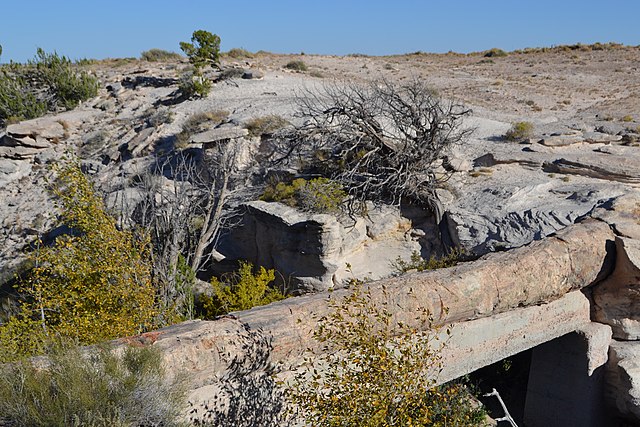 Agate Bridge, a fossilized tree.
Agate Bridge, a fossilized tree.
-
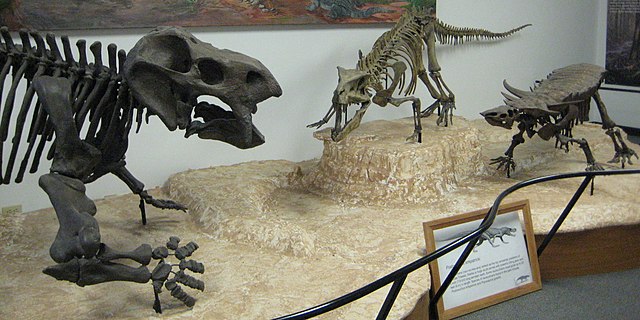 Reconstructed Triassic skeletons found at Petrified Forest
Reconstructed Triassic skeletons found at Petrified Forest
-

-
 Coyotes are omnivores with a widely varied diet including many rodents.
Coyotes are omnivores with a widely varied diet including many rodents.
-
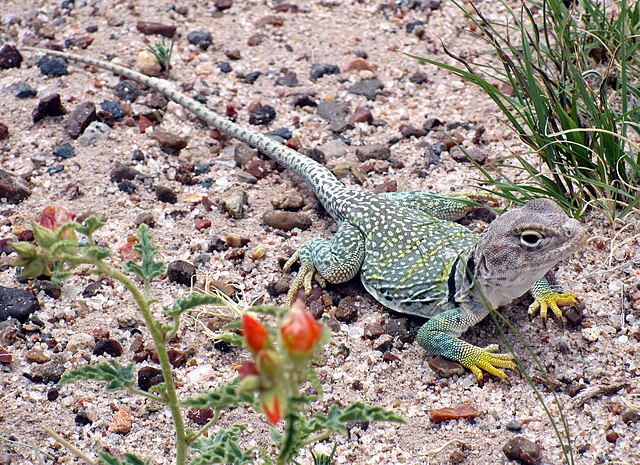 The collared lizard is the largest lizard in the park.
The collared lizard is the largest lizard in the park.
-

-
-
-
-
-
-
-
-
-
-

-
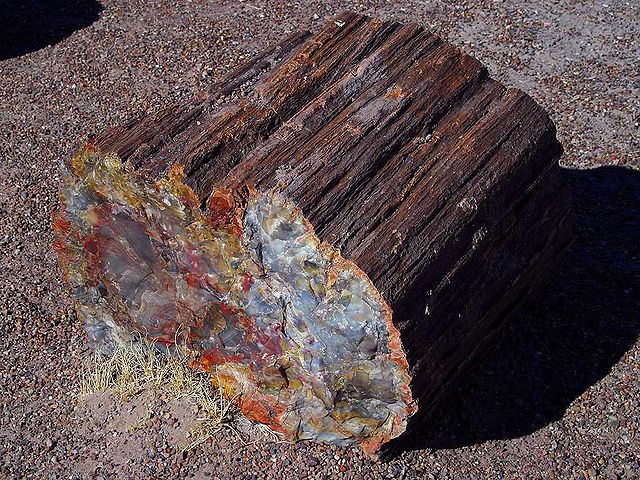
-

-

-

-

-

-

-

-

-

-
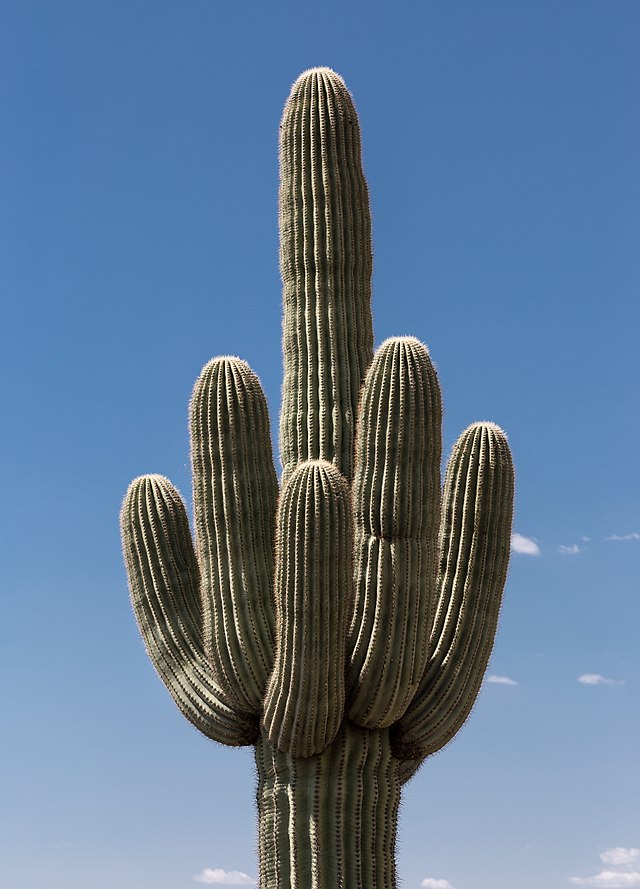
-

-

-

-

-

-

-
-
-
-
-
-
-
-
-
-

-

-

-

-

-
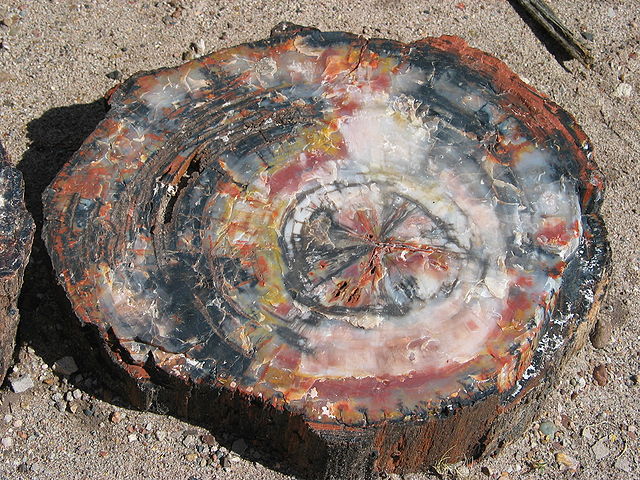
-

-

-

-

-

-
-
-
-
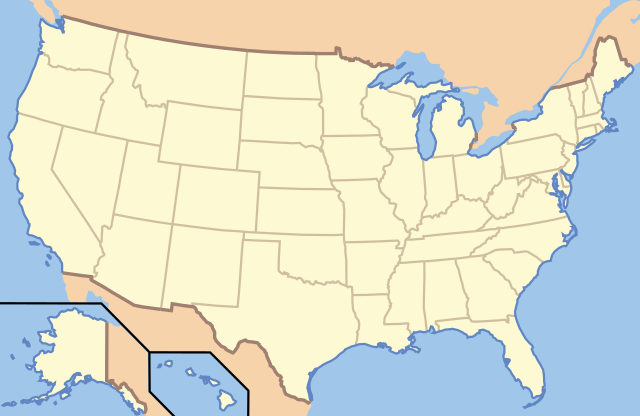
-
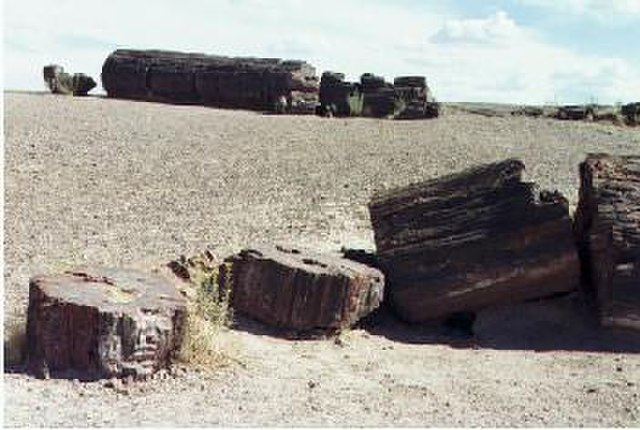
-

-

-

-

-
-

Comments
-
You want to see true beauty? Go here. We drove about 15 miles into the park and it was one exquisite sight after another. Be warned they do not take cash at the gate. You will need a card. Our fee was 25$. The price was well worth the experience and I’d pay it again in a heart beat.
a week ago -
What a fantastic national park to visit that is dog friendly. It is geared towards road touring as you drive from spot to spot and take short hikes to explore each area or viewing point. The roads were in great condition and generally most of the larger sites had restrooms available. It was really majestic place to visit to see all the petrified wood and the painted canyon. I highly recommend folks check it out. There isn't a lot of tree cover or shade so make sure to have sunscreen and have plenty of water.
a week ago -
We had a lot of fun here. They recently extended the hours of the park until 6:30 of you enter by 5. I would recommend more time that just an hour and a half though! Tons to see and do. Get the Navajo tacos at the visitor center before entering the park! They close at 4 so keep that in mind
a week ago -
Cool, unexpected pet friendly stop along I-40! You drive through the park and can pull over at all sorts of turn-outs and viewpoints. There isn't much hiking or walking involved, but you get to see a varied landscape of different rocks!
3 days ago -
Very light traffic, not many visitors. Just seeing all the petrified trees peaks your interest to learn more about them and what the area was like 200 million plus years ago. Amazing.
a week ago -
This is great drive-through park. You could do hikes but we just made multiple stops at the scenic overlooks and spent about an hour and a 1/2 in the park and that was great.
a week ago -
The painted desert North portion of the park is spectacular for its colorful overlooks. The many views and short walks from the pullouts in the Southern part of the park through the petrified trees are intriguing and amazing just thinking about what the area must have looked like millions of years ago when it was densely forested.
2 weeks ago -
There are a lot of different things to see in this park. Beware stops can be crowded and not all tourist are polite. We chose some of the spots less crowded and they did not disappoint. No trip is complete without the purchase of a piece of petrified wood. We skipped the park for this and stopped at the Rainbow Rock Shop in Holbrook.
2 weeks ago


















































































